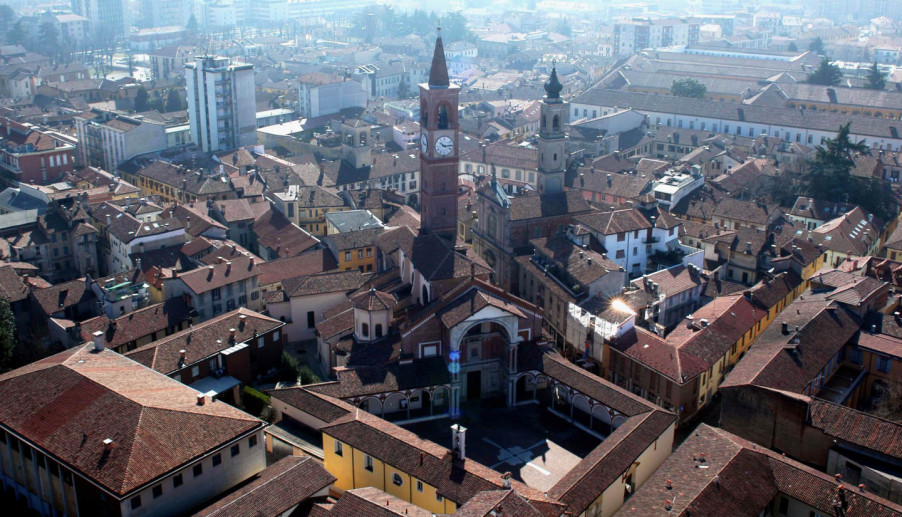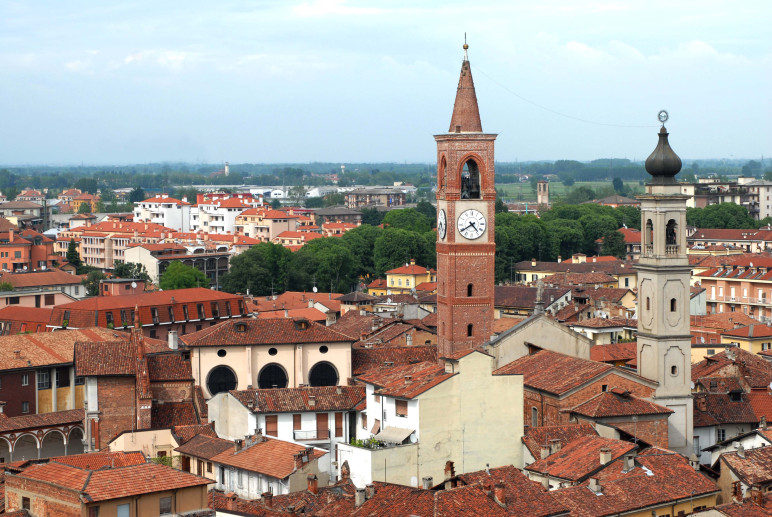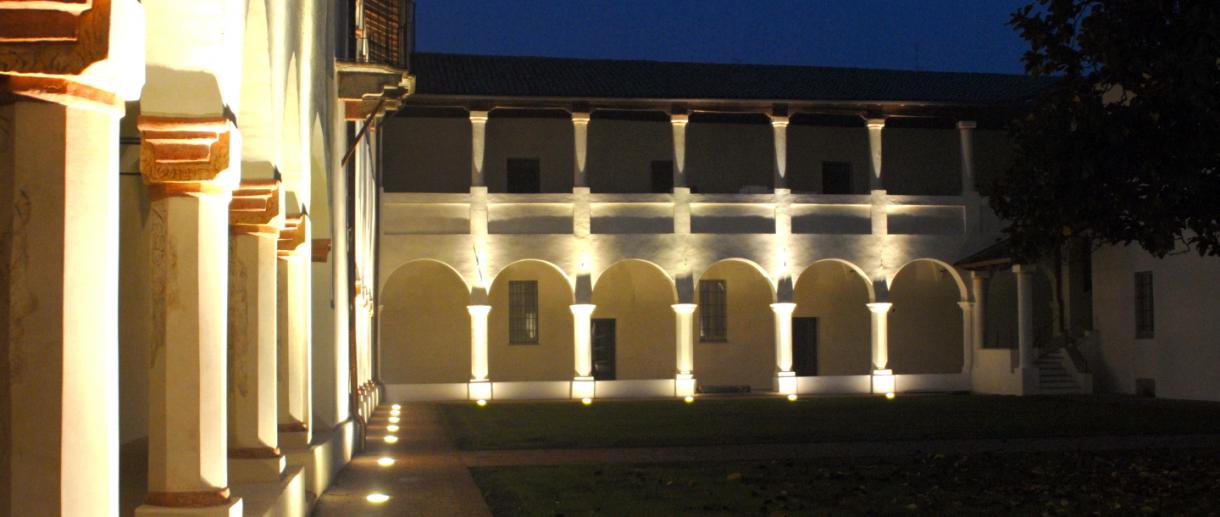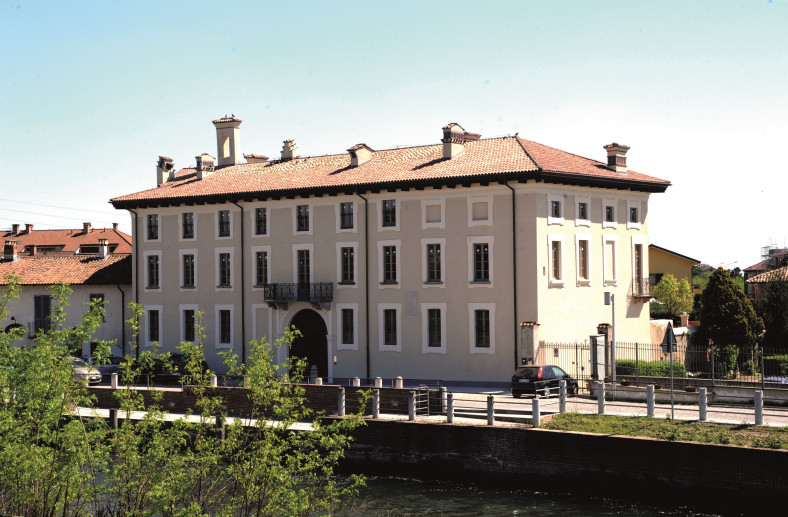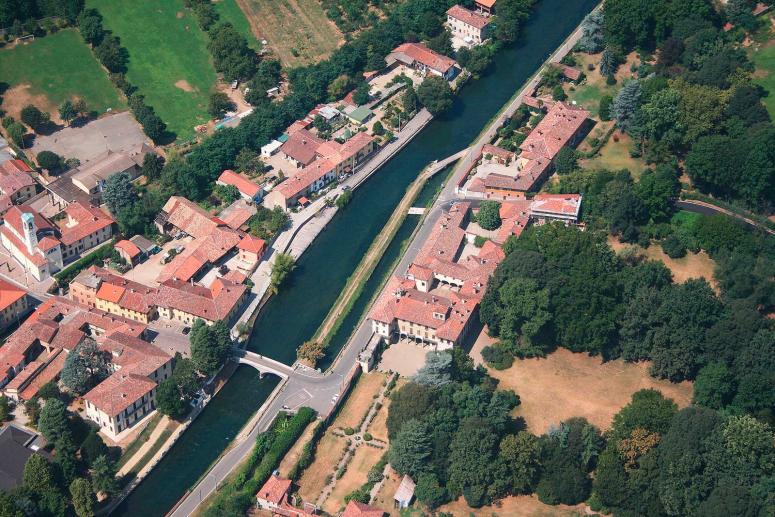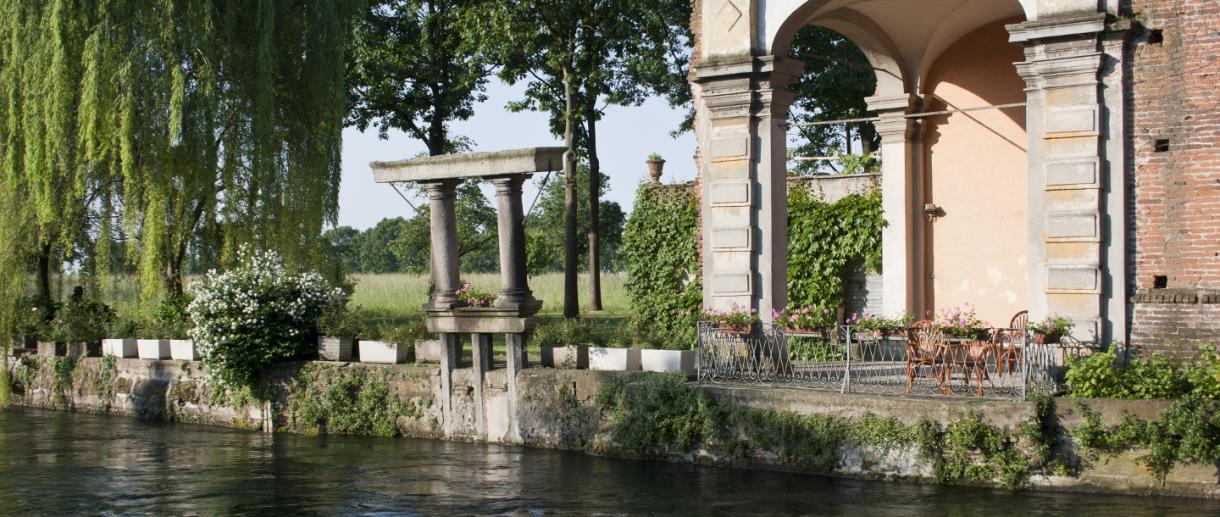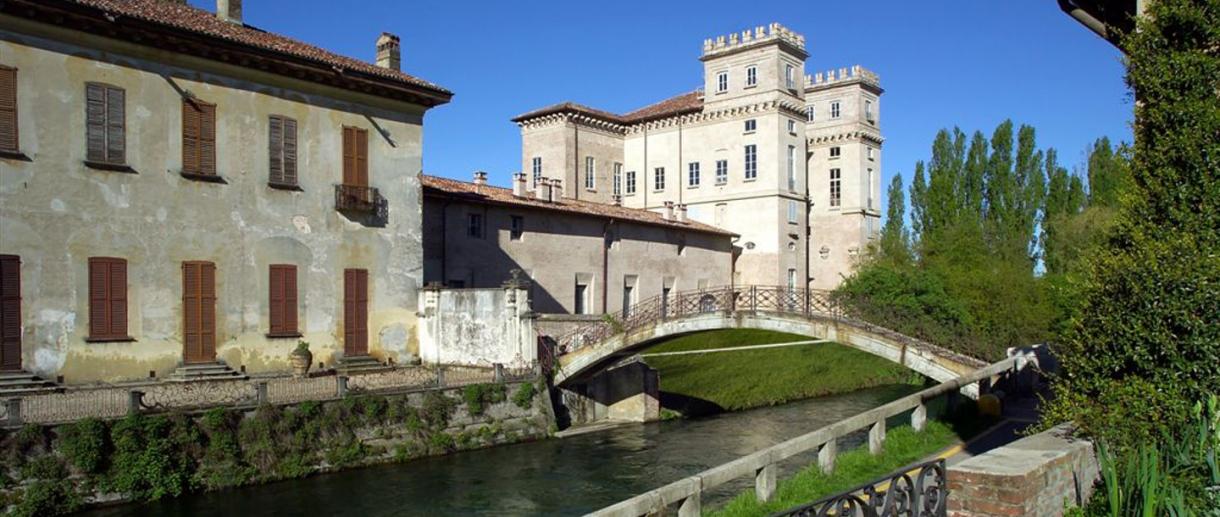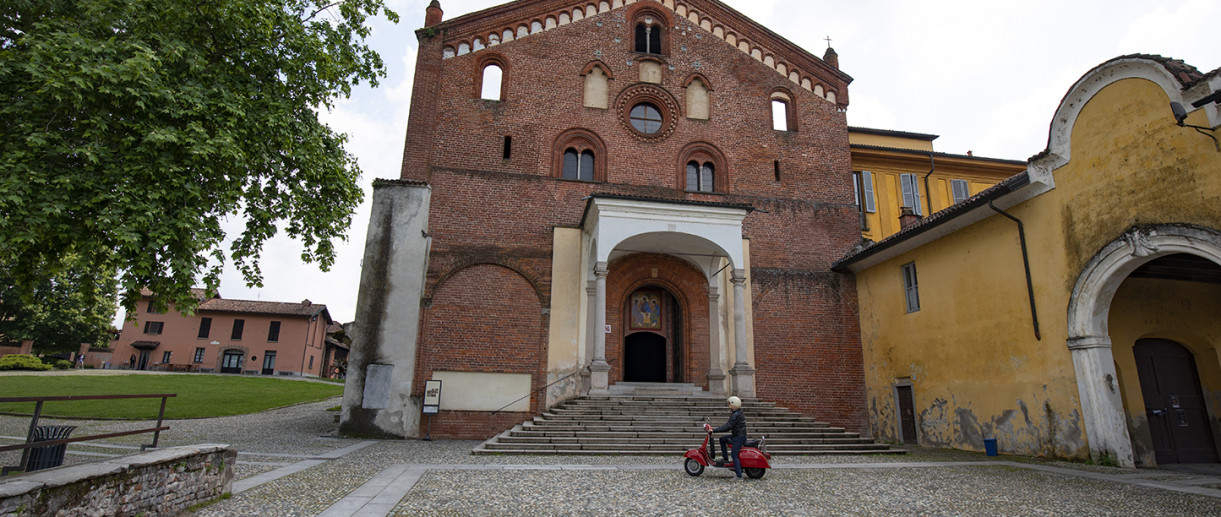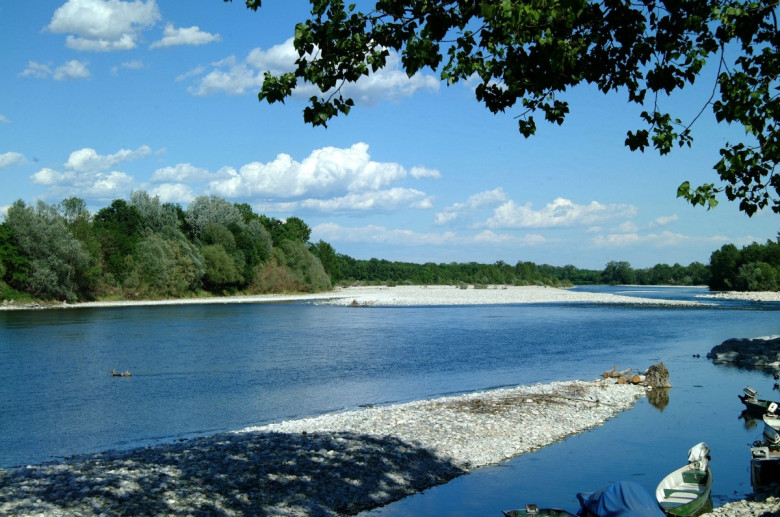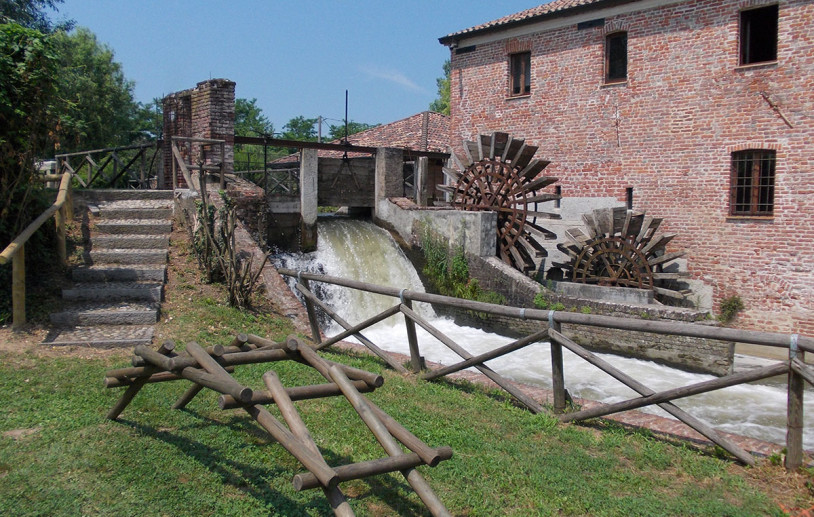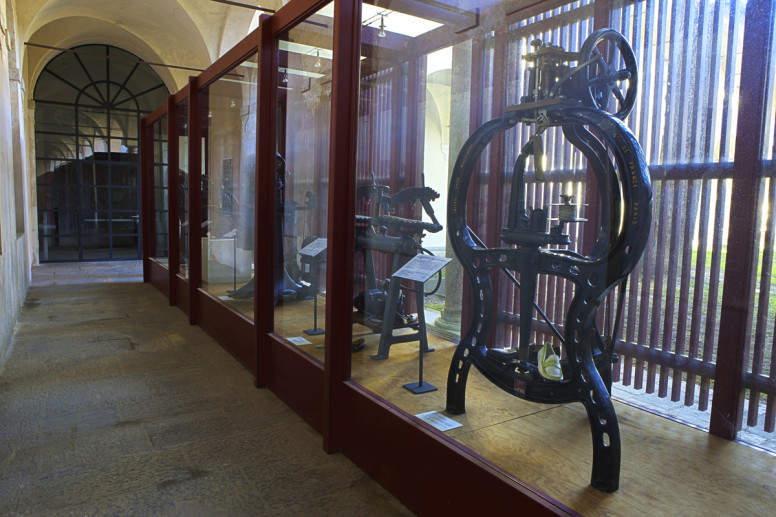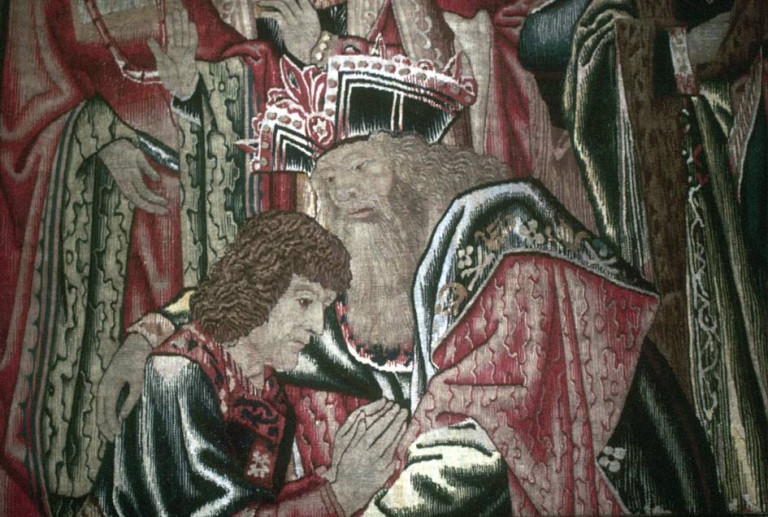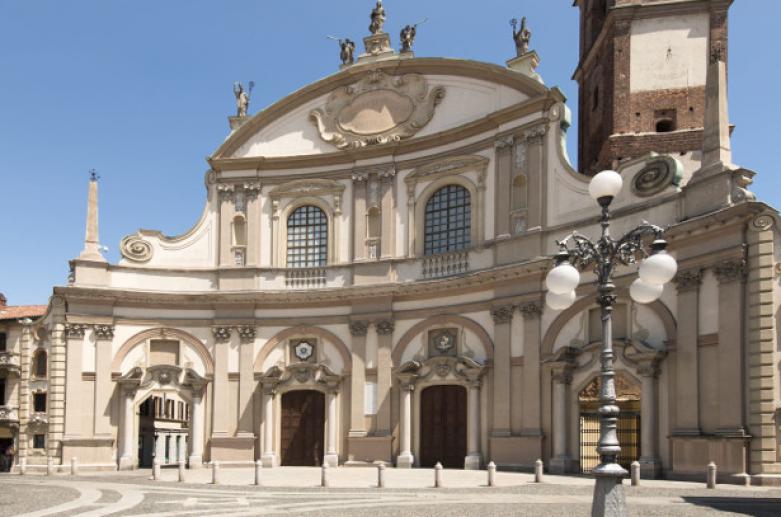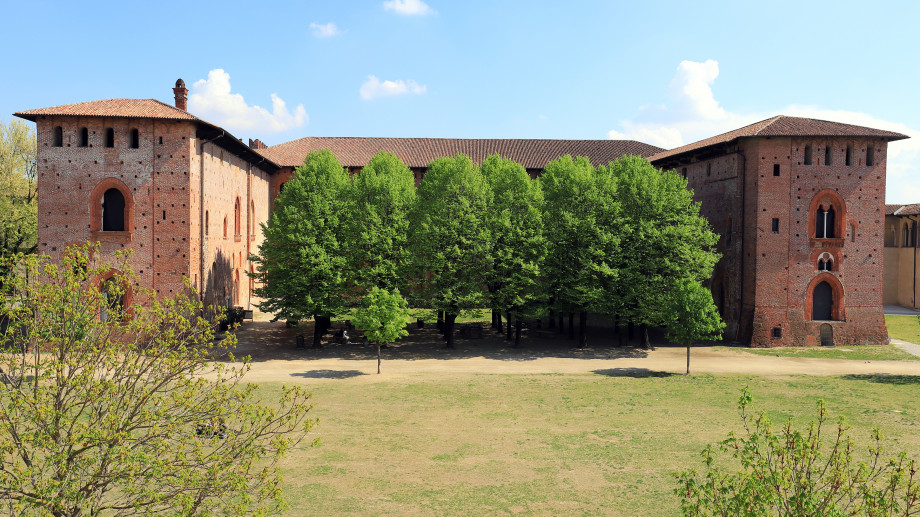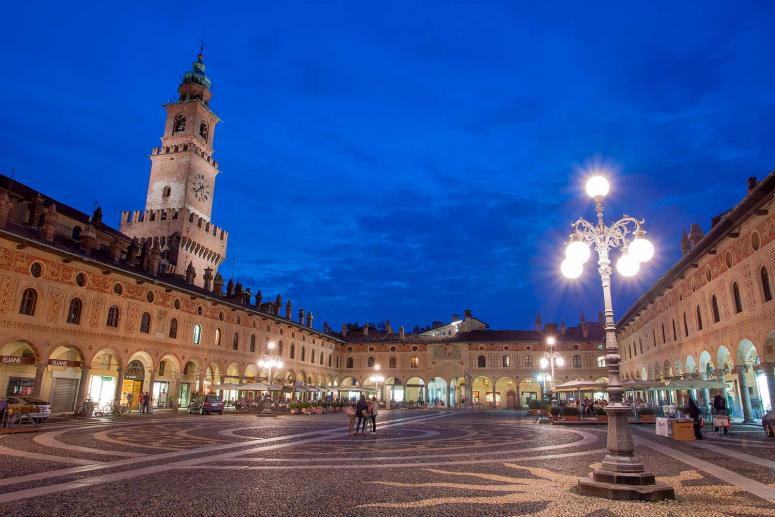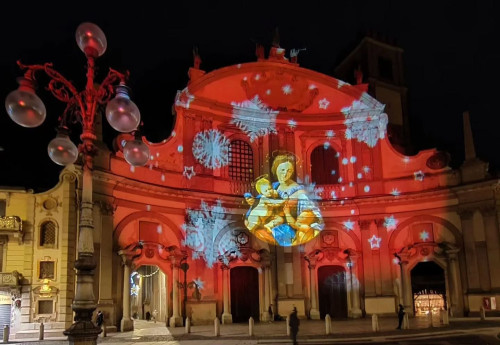- Religious Tourism
- Itinerari
Basilica of Santa Maria Nuova
The Church of Santa Maria Nuova is part of a monumental complex that also includes the quadriporticus in front of the church and the Chapel of Our Lady of Sorrows, an autonomous church built on the left side of the quadriporticus.
The church has a basilica plan, with three naves, covered by barrel vaults in the nave and ribbed vaults in the side naves.
On the side of the aisles open, respectively, 4 chapels in the nave and 5 in the right aisle.
Finally, a fragment of a fresco depicting St. Apollonia, attributable to the 15th century, is preserved in the Chapel of St. Catherine (left of the chancel). The decoration and furnishings of the remaining chapels, on the other hand, date from interventions in the 18th and 19th centuries.
The exception is the first chapel in the left aisle, dedicated to St. John the Baptist and now used as a baptismal font chapel, where the ancient graffito decoration, most likely made in 1469 to celebrate the birth of Gian Galeazzo Sforza, is still recognizable.
According to sources, however, as early as 1388 the church was dedicated to Santa Maria Nascente, probably to celebrate the birth of Gian Maria Visconti, son of Gian Galeazzo Visconti, who was born that same year in Abbiategrasso castle and probably baptized in this church. Historiography agrees that the building site was completed by the end of the 14th century.
In the last decade of the 15th century, on the other hand, construction of the pronaos began and continued until the end of the 16th century. A tile bearing the date 1497 allows the structures of the first order of the pronaos, traditionally attributed to a design by Bramante (though without documentary confirmation), to be dated to the end of the 15th century. After this first phase, construction probably stopped and the fifteenth-century pronaos was never brought to completion. Around 1595 Tolomeo Rinaldi is commissioned to build a large tiburium to protect the miraculous image of the Virgin and Child on the facade. To build the great archway (which we still see today) Rinaldi demolished part of the structures of the ancient pronaos, preserving only the architectural elements of the first order.
Between 1740 and 1745 the church and the quadriporticus underwent a major renovation, generally attributed to Francesco Croce.
The interior fresco decoration, on the other hand, dates from the second half of the 19th century by Giovanni Valtorta.
On the occasion of the "Jubilee 2025 - Pilgrims of Hope," the Basilica of Santa Maria Nuova in Abbiategrasso has been designated as a Jubilee Church of the Diocese of Milan.
To enhance the experience characteristic of the pilgrimage path, it can be reached by following the directions of two routes:
- Via Francisca del Lucomagno - www.laviafrancisca.org
- Road of the Abbeys www.cittametropolitana.mi.it/strada_abbazie/itinerari/index.html
Information about the Jubilee Year initiatives at the basilica at the website: www.cpsancarlo.eu
